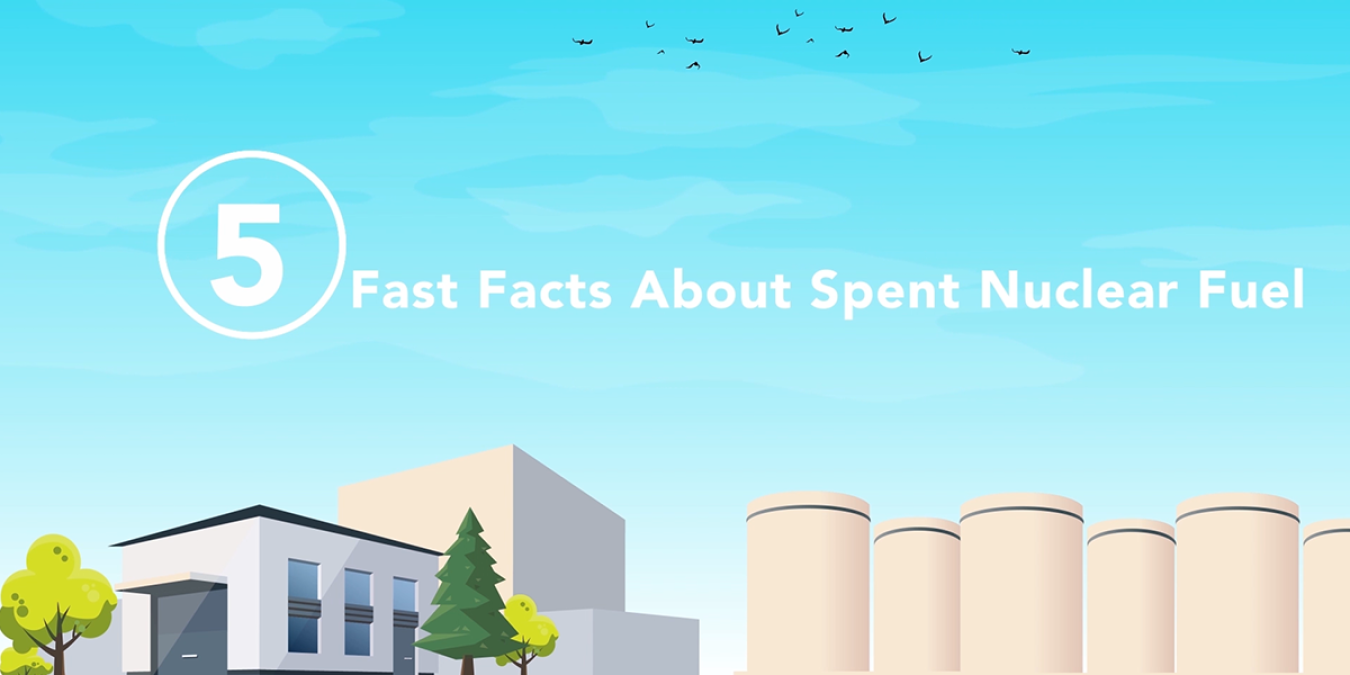Get up to speed with these five fast facts about spent nuclear fuel.
October 3, 2022Nuclear energy is one the nation's most dependable sources of power.
It generates nearly a fifth of America’s electricity.
During this process, it creates spent or used fuel (sometimes incorrectly referred to as nuclear waste) but it’s not the green oozy liquid you might be thinking of when watching "The Simpsons."
In fact, some in the industry actually consider it a valuable resource.
Say what?
Don’t worry, we’ll get you up to speed with these 5 fast facts on spent fuel that is generated from commercial nuclear power reactors in operation today.

Click above to view or download our 5 Fast Facts about Spent Nuclear Fuel infographic.
1. Commercial spent nuclear fuel is a solid
Spent fuel refers to the nuclear fuel that has been used in a reactor.
The fuel used in today’s commercial reactors is made up of small ceramic pellets of low-enriched uranium oxide. The fuel pellets are stacked vertically and encased in a metallic cladding to form a fuel rod. These fuel rods are bundled together into tall fuel assemblies that are then placed into the reactor.
The fuel is a solid when it goes into the reactor and a solid when it comes out.
Sorry “Simpsons.”
2. The U.S. generates about 2,000 metric tons of spent fuel each year
This number may sound like a lot, but the volume of the spent fuel assemblies is actually quite small considering the amount of energy they produce.
The amount is roughly equivalent to less than half the volume of an Olympic-sized swimming pool.
The electricity generated from this fuel would be enough to power more than 70 million homes.
If we take that a step further, U.S. commercial reactors have generated about 90,000 metric tons of spent fuel since the 1950s. If all of it were able to be stacked together, it could fit on a single football field at a depth of less than 10 yards.
The nation’s spent nuclear fuel is initially stored in steel-lined concrete pools surrounded by water. It’s later removed from the pools and placed into dry storage casks that are made of steel and concrete or other materials used for protective shielding.
3. Spent fuel from U.S. commercial nuclear power reactors is stored at more than 70 sites in 35 states
Most of the nation’s spent fuel is safely and securely stored at more than 70 reactor sites across the country. Roughly a quarter of these sites no longer have a reactor in operation.
The U.S. Department of Energy is now exploring the possibility of consolidating this spent nuclear fuel at one or more federal interim storage facilities using a consent-based siting process.
For the foreseeable future, the spent fuel can safely stay at the reactor sites or a future consolidated interim storage facility until a permanent disposal solution is determined by the federal government.
4. Spent fuel is safely transported across the United States
Over the last 55 years, more than 2,500 cask shipments of spent fuel have been transported across the United States without any radiological releases to the environment or harm to the public.
The fuel is shipped in transportation casks that are designed to withstand more than 99 percent of vehicle accidents, including water immersion, impact, punctures and fires.
5. Spent fuel can be recycled
That’s right!
Spent nuclear fuel can be recycled to make new fuel and byproducts.
More than 90% of its potential energy still remains in the fuel, even after five years of operation in a reactor.
The United States does not currently recycle spent nuclear fuel but foreign countries, such as France, do.
There are also some advanced reactor designs in development that could consume or run on spent nuclear fuel in the future.
Learn more about our work with spent nuclear fuel.

